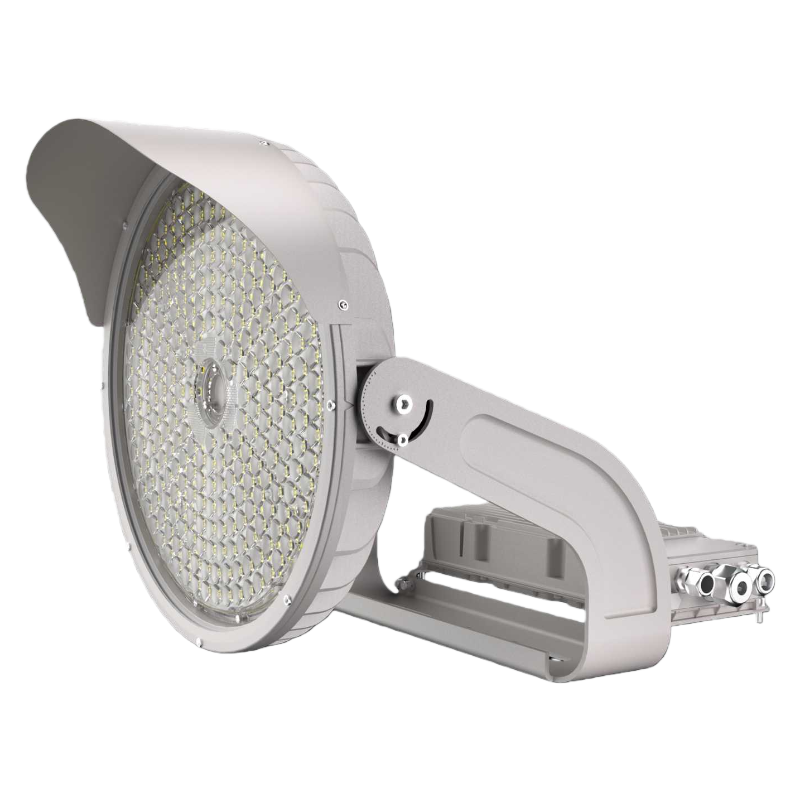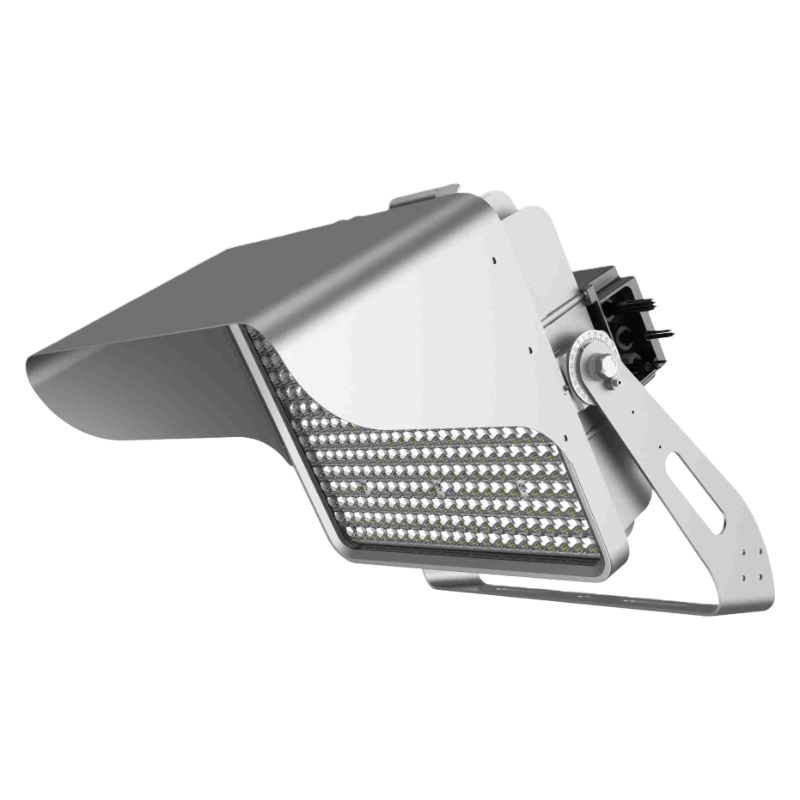How to combine light distribution and power of rural road lighting fixtures?
In rural road lighting, "light distribution" and "power" are core elements that complement each other: power determines "the total amount of light" (basic brightness), and light distribution determines "where the light goes" (whether it is used efficiently). The core logic of the combination of the two is - "use appropriate power to provide enough light, and then use light distribution to accurately project the light to the road surface, avoiding 'enough power but scattered light' (waste) or 'good light distribution but insufficient light' (insufficient brightness)".
Different types of rural roads have significantly different requirements for the combination of the two, which can be divided into the following categories according to road scenes:
1. Narrow paths/branch roads (1.5-3 meters, mainly for pedestrians): low power + narrow light distribution, "less light but no waste"
Power selection
Suitable power: 15-30W (LED lamps)
(Reason: only pedestrians need to see the road surface clearly (average illumination 3-5lux), no need for too high brightness; if the power exceeds 30W, even if the light distribution is reasonable, it may cause the road surface to be too bright (≥8lux), which is dazzling)
Light distribution type
Corresponding light distribution: narrow light distribution (beam angle 60°-90°)
Combination core
"Small power just meets the light quantity, narrow light distribution locks the light range":
15-30W of light is concentrated and projected onto a 1.5-3 meter wide road surface through narrow light distribution (no horizontal diffusion, vertical coverage 10-15 meters), the road will not be dark due to insufficient light, nor will the light "run to farmland/residential houses" due to too wide a distribution (avoiding light pollution).
Counterexample: If 30W is used but the distribution is too wide (beam angle 120°), the light will spread to both sides, and the actual amount of light received by the road will be insufficient (the power needs to be increased to 40W to make up for it, resulting in power waste).
2. Village-level main roads/secondary roads (3-6 meters, with motor vehicles passing at low speed): medium power + medium light distribution, "sufficient light and uniform coverage"
Power selection
Suitable power: 30-60W (LED lamp)
(Reason: Motor vehicles must see road markings, pedestrians and obstacles clearly (average illumination 5-10lux); if it is lower than 30W, even if the light distribution is reasonable, it may cause a dark area between the two lamps due to insufficient light)
Light distribution type
Corresponding light distribution: medium light distribution (beam angle 90°-120°)
Combined core
"Medium power provides sufficient light, and medium light distribution ensures uniform coverage":
30-60W of light, through medium light distribution, horizontally covers 3-6 meters of road surface (including 0.5 meters of safety zone on both sides), and vertically covers 15-20 meters (matching the 20-25 meters of street lamp spacing), so that the light of two adjacent lamps is "seamlessly connected" on the road surface (no alternation of light and dark).
Key details: If there are residential houses on one side of the road (to avoid direct light hitting the windows), "asymmetric center light distribution" can be selected (the light beam is tilted 5°-10° to the side without residential houses). At this time, the power can be maintained at 30-60W, but by adjusting the light distribution, the amount of light on the road is not reduced, and the impact on residential houses can be reduced.
3. Township connecting line/key road section (6-9 meters, many motor vehicles, speed 20-40km/h): high power + wide light distribution, "high light volume + wide coverage"
Power selection
Suitable power: 60-100W (LED lamp)
(Reason: It needs to meet the sight distance requirements of motor vehicles (average illumination 8-15lux), and the driver needs to see the road obstacles 10-15 meters in advance; if the power is lower than 60W, even if the wide light distribution has enough coverage, the road surface will be dark overall due to insufficient light)
Light distribution type
Corresponding light distribution: wide light distribution (beam angle 120°-150°)
Combined with the core
"High power provides sufficient light volume, and wide light distribution supports wide coverage":
The light volume of 60-100W, through the wide light distribution, covers 6-9 meters of road surface horizontally (including 1 meter safety zone on both sides), 20-25 meters vertically (matching 25-30 =100 meters of street lamp spacing), ensure uniform road illumination (minimum illumination / average illumination ≥ 0.5), and avoid visual fatigue caused by "uneven brightness and darkness" when driving motor vehicles.
Note: If there are farmlands on both sides of the road (no need to avoid light), "symmetrical wide light distribution" can be selected; if there are dense residential houses on one side, "biased wide light distribution" (10° to the farmland side) can be selected, and the power does not need to be increased at this time (to avoid light diffusion to the residential side and cause waste).
4. Special dangerous sections (curves, ramps, intersections): "power fine-tuning + directional optimization of light distribution", targeted supplementary lighting
Curves (need to illuminate the inner blind spot)
Basic power: the power of the straight road in the same section (such as 30-60W for village-level main roads), can be increased by 10%-20% (such as 40-70W to ensure more light in the curve area).
Light distribution: Asymmetric biased light distribution (the light beam is offset 10°-15° to the inside of the curve), ensuring that the illumination of the inner road surface (blind spot) is not lower than that of the straight road (avoiding "bright outside and dark inside").
Slope (visual distance needs to be extended)
Basic power: The power of the straight road in the same section can be increased by 10% (such as 70-110W for township connecting lines).
Light distribution: Longitudinal extension light distribution (longitudinal beam angle is extended by 5°-10°), so that the light projection distance is 5-10 meters farther than the straight road (illuminating the top of the slope when going uphill and the bottom of the slope when going downhill).
Intersection (no blind spot coverage is required)
Power: 20%-30% higher than the same width section (such as 40-80W for intersections of village-level main roads), ensuring that the illumination in the central area (≥12lux) is higher than the surrounding road surface.
Light distribution: Omnidirectional wide light distribution (beam angle of more than 150°), so that the light spreads evenly in all directions of the intersection (avoiding dark areas in a certain direction).
5. Core principle: "Pitfall avoidance guide" combining light distribution and power
Do not blindly pile up power; prioritize light distribution optimization
Example: For a 3-meter-wide path, it is more reasonable to use 30W + narrow light distribution (beam angle of 60°) than 50W + wide light distribution (beam angle of 120°) - the former is all light on the road surface, while the latter is scattered on both sides, and the actual brightness of the road surface may be lower (and waste electricity).
Light distribution needs to match the power "output capacity"
If high power (such as 100W) is matched with narrow light distribution (60°), the road surface will be "partially too bright" (≥20lux directly below the lamp), which is dazzling and wasteful; if low power (such as 20W) is matched with wide light distribution (120°), the light will be "too thin" and the road surface will be dim as a whole (average illumination ≤2lux).
Combined with installation height adjustment (the "implicit association" between light distribution and power)
Low installation height (3-5 meters, such as a small road): light distribution needs to be narrower (to avoid light diffusion from low altitude), and the power can be smaller (the light is close to the road surface, so no large light volume is required).
High installation height (6-8 meters, such as a township connecting line): light distribution needs to be wider (light is projected from high altitude, and needs to cover a wider area), and the power needs to be greater (the light propagates over a long distance, and sufficient light volume is required to offset attenuation).
Summary
In rural road lighting, "light distribution" is a "tool for precise use of light" and "power" is the "basis of light volume". The core of the combination of the two is - "determine the power according to the road width and traffic demand (to ensure sufficient light volume), and determine the light distribution according to the road scene (to ensure that the light is used in the right place)". The ultimate goal is: to achieve "sufficient brightness, uniformity, no waste, and less pollution" on the road surface with the lowest power cost.











